1 June 2024 – Dr Sophie Louisa Bennett, PhD Conservation Biology (Lincoln 2016), MA Modern and Medieval Languages – German and Swedish (KC 1987, Cantab 2020)
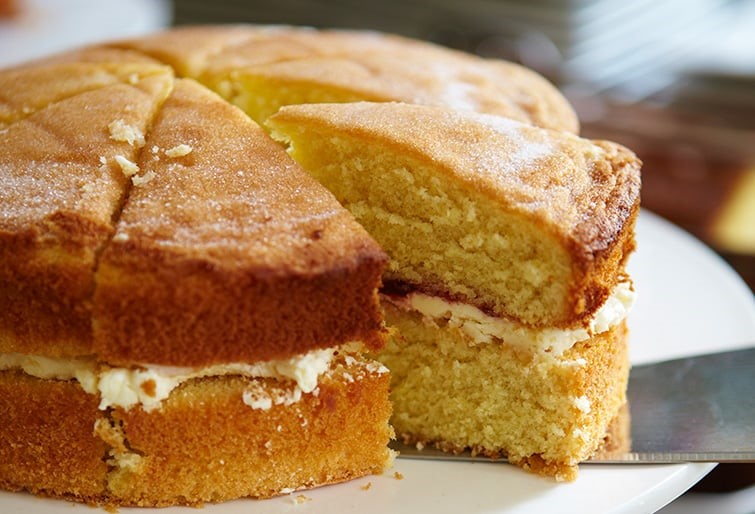
I was asked by Mum to bake a cake ‘in honour’ of a visitor – family members we have not seen in a while – the following day. I don’t like baking particularly and was startled that she should plump for a ‘Victoria Sponge’. A very specific requirement.
How not to bake a Victoria Sponge when asked so directly? The easiest method is to reject the suggestion of using the Victoria Sponge method of baking a sandwich cake, because, let’s face it, it’s a faff! All that creaming and carefully adding teaspoons of egg in order to avoid curdling…
There is a recipe on the English Heritage website, since the Victoria Sponge is thought to have been ‘invented’ in honour of Queen Victoria (1), who ruled for rather a long time and obviously ate quite a lot of afternoon teas during the latter part of the 19th century. Alternatively, you can use a Delia Smith recipe and get a similar effect with less frustration than the Victoria method.
There are one or two alternatives I know of: the All-in-One Sponge uses 4oz or 110g of dry ingredients and butter, plus 2 large eggs, a teaspoon of baking powder etc – and plenty of elbow grease and patience. By contrast, the Fresh Lemon Curd Cake recipe uses 6oz/175g of dry ingredients and butter, plus 3 standard eggs, a small amount of baking powder (despite use of self-raising flour) and a tablespoon of lemon juice and zest of one lemon in the batter. You could possibly leave the latter out if you don’t want a lemony taste, but it goes well with raspberry jam in the centre (we don’t bother with buttercream). Must be seedless raspberry jam in our household.
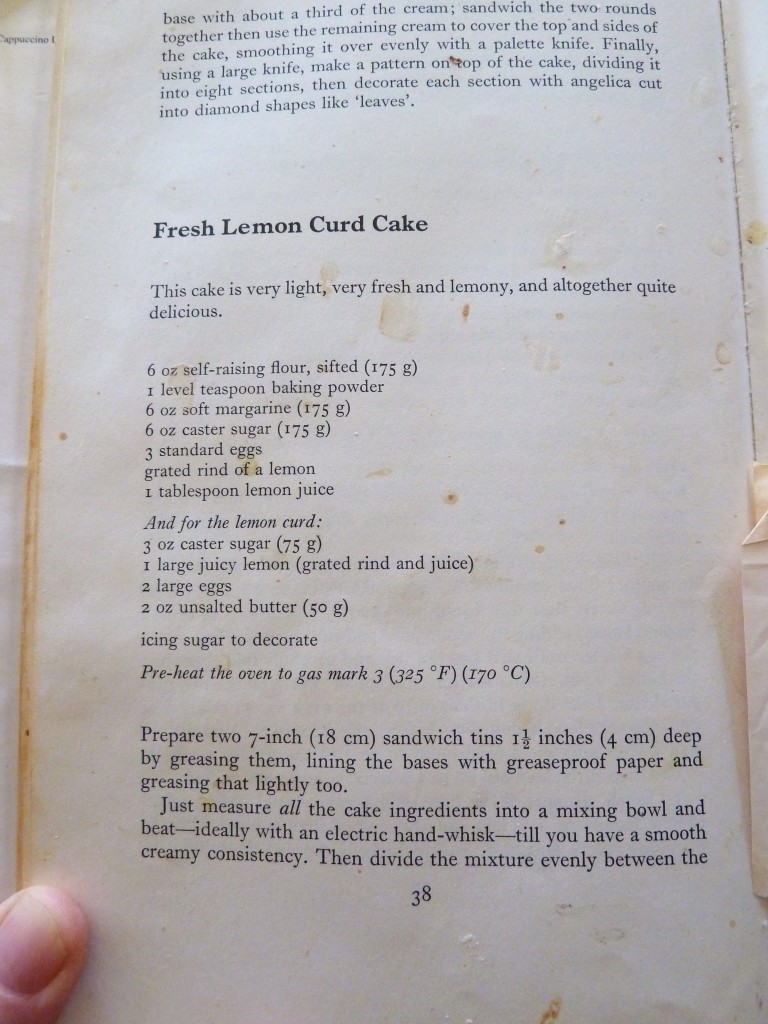
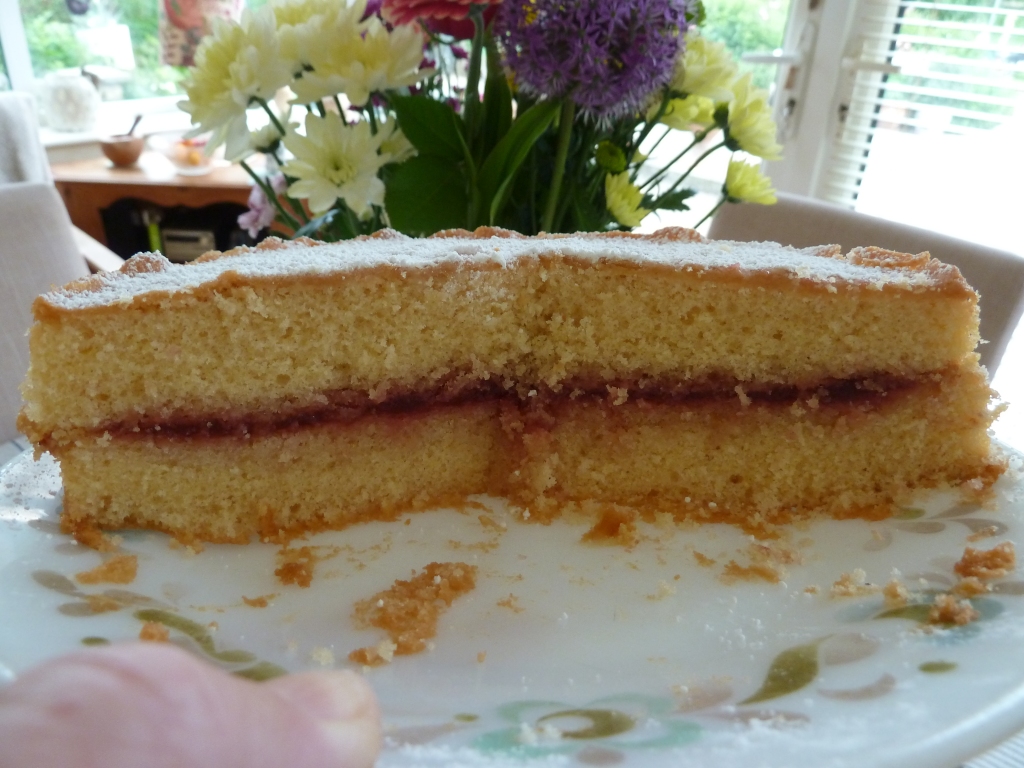
[The fresh lemon curd is surprisingly easy to make – Delia recommends a whole egg recipe which I have got right a few times and at other times ended up with a few ‘curds’ or soft lumps, but this doesn’t really matter as they are perfectly edible and add texture.]
Not quite as easy as ABC, but certainly easier than the Victoria Sponge method.
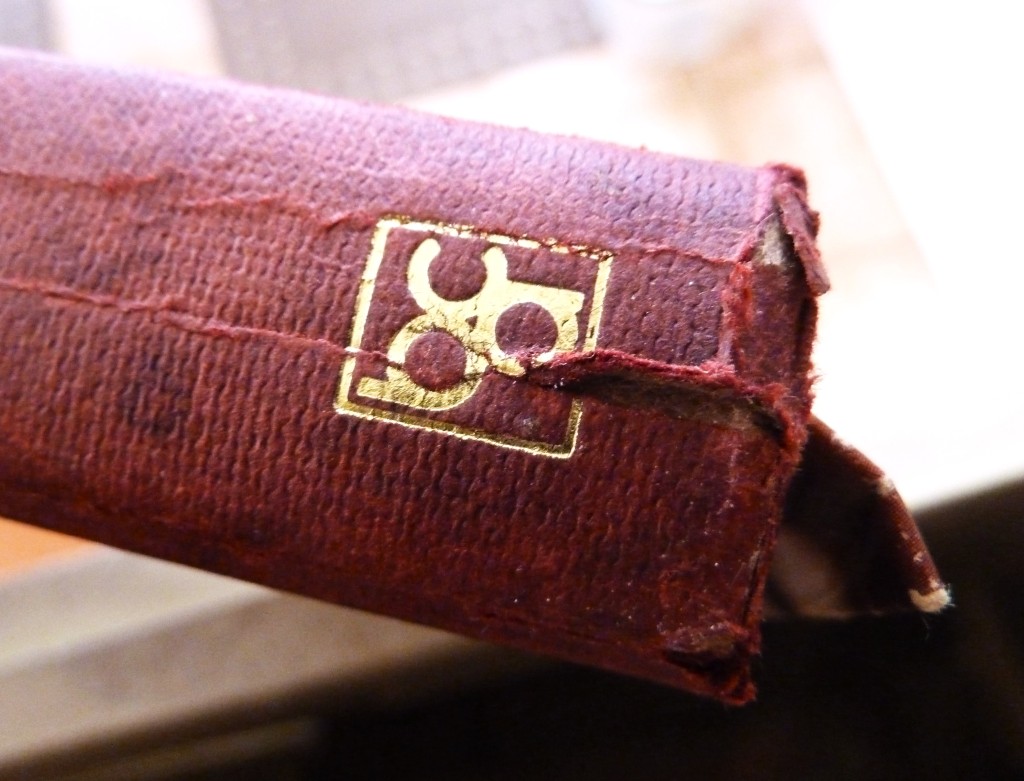
Notes:
(1) Queen Victoria and a bit about the history of her sponge cake…

THE QUEEN AND HER CAKES
In honour of the Great British Bake Off returning to our screens, Curator Michael Hunter gives a brief account of a quintessential British institution, afternoon tea, and gets to the soggy bottom of three cakes closely associated with Queen Victoria: Battenburg Cake, Victoria Sponge and Osborne Pudding. Queen Victoria had a very “sweet tooth” and the royal kitchens were kept busy catering to this particular aspect of their mistress’s appetite.
“… the confectionery cooks are kept busy all the year round at Windsor, for wherever the Court may be there must follow a large supply of cakes. Among the favourites of the Queen which are carefully packed in small tin boxes, and sent to the Court four times a week, were chocolate sponges, wafers of two or three different shapes, langues de chat, biscuits and drop cakes of all kinds, tablets, petit fours, princess and rice cakes, pralines, almond sweets, and a large quantity of mixed sweets”.
The Private Life of the Queen. By One of Her Majesty’s Servants. 1897
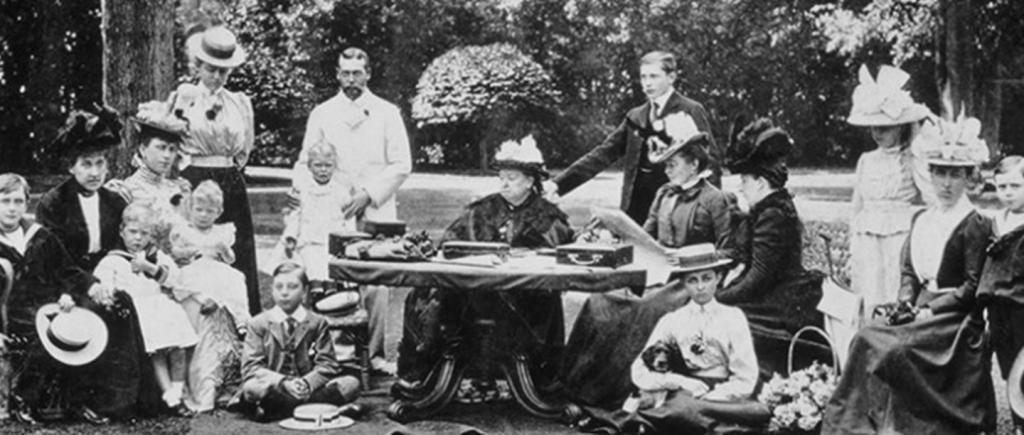
HISTORY OF AFTERNOON TEA
Afternoon tea, as we understand it, only seems to have come about following the circulation of cookery books in the 1870s and 80s, but the idea of taking tea was in existence by the late eighteenth century.
The Victorians made tea drinking very much their own and it soon became an essential part of socialising. Afternoon tea was less troublesome than inviting a guest for dinner, but more inviting than an afternoon visit with no refreshment.
These afternoon teas were essentially a feminine activity associated with the domestic realm. At Osborne House, this suited Queen Victoria’s indulgence in creating a domestic idyll.
VICTORIA SPONGE: HEALTH AND SAFETY GONE MAD?
A quintessential English teatime treat, the Victoria Sponge, is another cake associated with Queen Victoria. It is widely thought that this sponge cake sandwiched together with raspberry jam and dusted on the top with caster sugar was the Queen’s favourite.
Originally, the Victoria Sponge may have started in the nursery. In the early Victorian period, afternoon tea consisted of seed cake and fruit cake. For safety reasons, it was believed that children should not eat a cake containing pieces of fruit or seeds. The light, harmless Victoria Sponge was prepared as a teatime treat for them instead! Only later on did it make its way to the adult tea table.
See:
https://www.english-heritage.org.uk/visit/inspire-me/blog/blog-posts/cakes/

